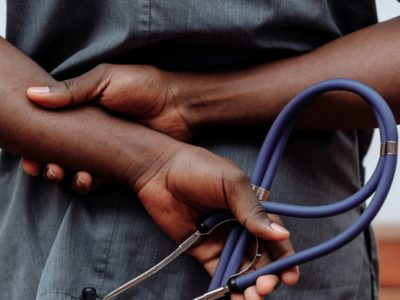The world continues to watch in agony as India wrestles with the worst outbreak of COVID-19 on record since the start of the coronavirus pandemic. The country reported more than 400,000 positive cases on Wednesday alone.
Dr. Sumit Ray is the Chief of Critical Care at The Holy Family Hospital New Delhi, which is currently at 140% capacity. The corridors in the ER are now so crowded that it’s hard to walk.
Peeking Behind the Curtain
Dr. Ray says he and his staff are dealing with a crisis unlike any other. They have had to keep patients in the emergency room for hours, if not days, because there aren’t enough beds to go around in the sick wards.
“There [are] about 30 patients in a common area, which used to be the outpatient department. We have used those rooms also and put beds there, monitors there, oxygen cylinders there,” he said in a recent interview with NPR.
His hospital is doing the best it can, but he says the country’s healthcare system has “collapsed”.
He says they are expecting a surge in demand for critical care two or three weeks down the line now that they’ve seen a peak in the number of cases.
But his facility is already at a breaking point.
Putting critically ill patients in the common room comes at a price. “Obviously, the quality of care is not the same because the level of monitoring, etc., cannot be managed as it is needed in the ICU.”
Dr. Ray says he asked the government to prepare for a surge in cases a while back, but the help has yet to materialize. Just 2% of the country’s population is fully vaccinated. A little more than 160,000 shots have been administered among the 1.3 billion people that call India “home” and the country is running low on supplies.
The crisis is affecting healthcare workers at home as well. “The situation has reached such a point that many of our staff are scared that even if their loved one becomes seriously ill with COVID, will they find a bed in our own hospital or any other hospital for that matter?”
Fake Oxygen
Dr. Chahat Verma, 26, is facing a similar situation at Ganga Ram Hospital, where she’s looking after anywhere between 25 to 30 patients all by herself.
She’s seen more than her fair share of death over the past few weeks. To make matters worse, much of the country has run out of oxygen, so there’s not much she can do when oxygen saturation levels run low.
“They’d lie there, watching the patient gasping, unable to breathe, and they knew we weren’t giving oxygen because there wasn’t any. The look in their eyes was one of pure terror. They knew it could be their turn next,” Verma recently told The Guardian.
She adds that this can be deeply upsetting to the other patients, because the same thing could happen to them at any moment. Without warning, they would turn to see someone scramble frantically around their bed when their oxygen levels start to plunge.
When the country ran out of oxygen earlier this year, it changed the mood in the ER for the worst. “It was very distressing. I saw them become drowsy, not reacting, as the heart and brain felt the effect of being denied oxygen. Every organ of the body needs oxygen. Its toll on the body when the body isn’t getting what it needs is awful,” Verma said.
She recalled one day when she saw five patients die around the same time. She tried to administer CPR, but it didn’t do any good. The experience left her feeling enraged. “My father is an army officer and he taught me early on that anger is no good unless you channel it. I just had to focus on helping who I could,” she said.
It was just over a week ago that international allies began sending oxygen to India to help beef up supply, but there isn’t enough to go around. Family members have had to raise money to send oxygen to their loved ones.
The issue of supply has become a complicated issue across the country. India recently barred the use of oxygen for industrial purposes to divert more to local hospitals, but transportation has become nearly impossible. Many transport workers have come down with the virus, leaving no one to drive the trucks, although the Air Force has stepped in to help fill in the gaps.
Some facilities have started receiving shipments, but many have patients that are struggling to breathe. The U.S. just sent nearly a million rapid response tests, 440 cylinders of oxygen and 100,000 N95 masks to India, but supplies remain stuck in airport hangers as hospitals plead with the government for help.
USAID has already sent $23 million to India since the start of the pandemic, reaching 10 million residents, but there’s only so much the U.S. can do to help. Our hearts go out to India.

















